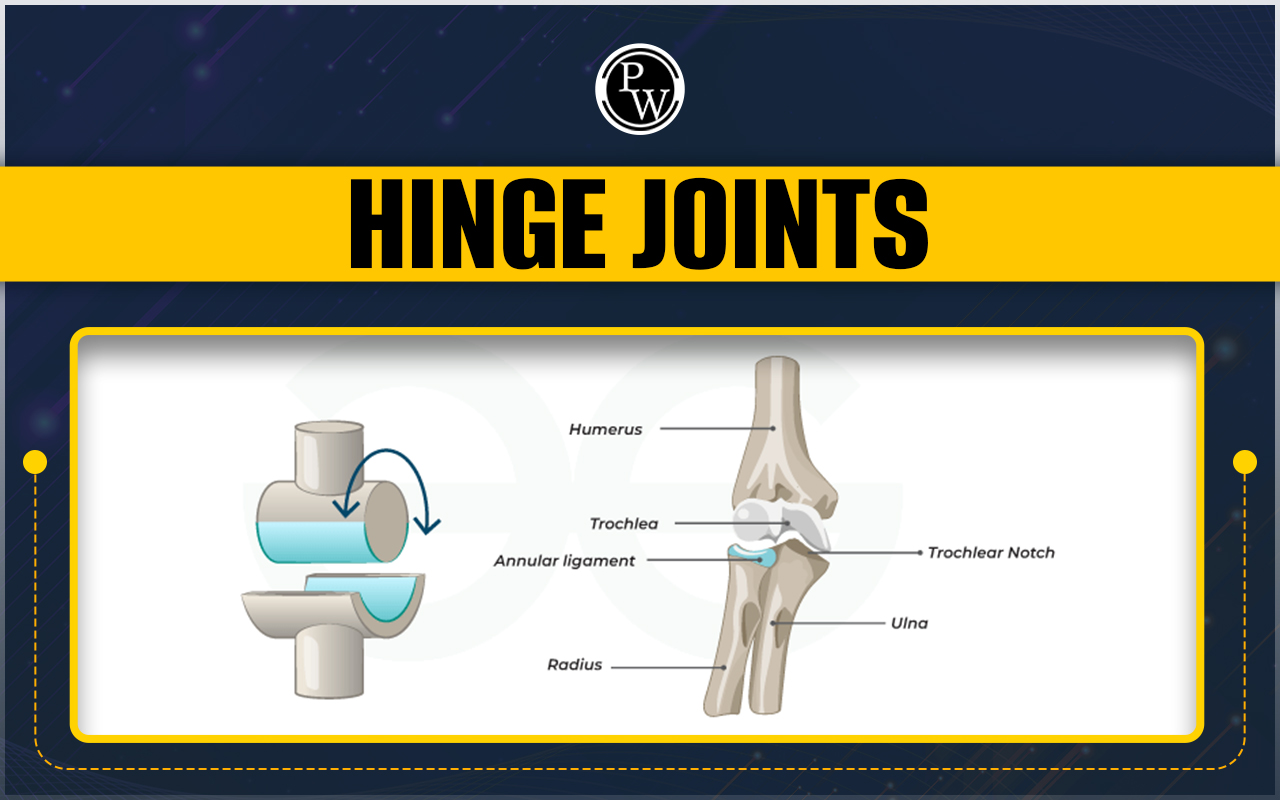

Hinge Joints: Bones are joined together throughout the human body. The human body has many different joints. Some joints, such as those in vertebrates, have a limited range of motion. Like the joints in the toes and fingers, some joints can move more than others. Hinge joints are the name given to such joints.
Glyolysis and Glycolytic Pathway
Synovial joints include hinge joints in their classification. Like the joints in limbs, a synovial joint is found between two bones that move against one another. The shoulder, hip, elbow, and knee are examples. A hinge joint is thus described as a joint between two bones that only permits movement in one plane. For instance, human fingers, toes, elbows, knees, and ankles have hinge joints.Consequences of Hinge Joints
- Ball-and-socket joints move along more than one plane, in contrast to hinge joints, which only move in one plane.
- Although hinge joints are thought to be stable, this is not always the case. Parts of the hands and feet are where dislocated hinge joints most frequently occur.
- Regressive sports activities typically have an impact on hinge joints. Take a runner's knee, for instance.
- One can keep a healthy hinge joint by eating a balanced diet, managing stress, exercising regularly, and building up the muscles around the joints.
- Hinge joints, unlike other joints, allow movement in a single plane.
- Joints can be bent, flexed, and straightened using hinge joints. An illustration would be flexing a finger or toe.
- The protective cartilage and the thick synovial fluid cover the bones in hinge joints. By lubricating the bones, this fluid makes them more easily mobile.
- Muscles, ligaments, and other types of tissues support the joint in all hinge joints.
- Compared to ball-and-socket joints, like those in the hip and shoulder, hinge joints are more stable. However, ball-and-socket joints can move more.
Hinge Joint Types
- The Ankle: The talocrural region is the name of the ankle joint. The ankle and foot movement is controlled by this joint. Side-to-side movement is possible at this joint. The talocrural joint, subtler joint, and tibiofibular joint are the three individual joints that make up the hinge joint of the ankle.
- The Knee: The lower leg is joined to the thighs at the knee joint. The largest joint in the human body and one that differs from the other hinge joints is the knee. It differs from other movements, permitting side-to-side motion, flexion, and extension.
- The Hand: All joints connecting the fingers are called interphalangeal joints. The most crucial hinge joint is the hand because it is used for so many daily tasks by people. There are three different sets of joints: the metatarsophalangeal, proximal, and distal interphalangeal joints.
- The Foot: The feet have three interphalangeal joints, like the hands. They have tendons, additional ligaments, and two planters. Despite having a different appearance from fingers, toes exhibit the same two movements, flexion, and extension.
- The Elbow: The humerus, which is located in the upper arm, and the radius and ulna, which are located in the lower arm, are joined at the elbow joint. It is called the humeral-lunar joint. The humeroulnar joint is located between an ulnar notch and a humeral notch.
- The Jaw: One can open and close their mouth using the jaw, which functions as a hinge joint. Additionally, the jaw can tilt to one side. Even though the jawbone is not a hinge joint, the hinge joint causes the jawbone to move.
Q1. Why, in only one direction can a hinge joint bend?
Ans- Because of their shape, hinge joints can only bend in one direction; this idea is known as "form dictates function."
Q2. What are examples of hinge joints?
Ans- Ankle, elbow, knee, and interphalangeal joints are included in the hinge joint.
Q3. What movements are allowed by hinge joints?
Ans- The hinge joint's movement along a single axis makes flexibility and extension possible. A hinge joint can bend with flexion while it can straighten with extension.
Q4. Is the shoulder a hinge joint?
Ans- The shoulder is a ball-and-socket joint, not a hinge joint.
🔥 Trending Blogs
Talk to a counsellorHave doubts? Our support team will be happy to assist you!

Free Learning Resources
PW Books
Notes (Class 10-12)
PW Study Materials
Notes (Class 6-9)
Ncert Solutions
Govt Exams
Class 6th to 12th Online Courses
Govt Job Exams Courses
UPSC Coaching
Defence Exam Coaching
Gate Exam Coaching
Other Exams
Know about Physics Wallah
Physics Wallah is an Indian edtech platform that provides accessible & comprehensive learning experiences to students from Class 6th to postgraduate level. We also provide extensive NCERT solutions, sample paper, NEET, JEE Mains, BITSAT previous year papers & more such resources to students. Physics Wallah also caters to over 3.5 million registered students and over 78 lakh+ Youtube subscribers with 4.8 rating on its app.
We Stand Out because
We provide students with intensive courses with India’s qualified & experienced faculties & mentors. PW strives to make the learning experience comprehensive and accessible for students of all sections of society. We believe in empowering every single student who couldn't dream of a good career in engineering and medical field earlier.
Our Key Focus Areas
Physics Wallah's main focus is to make the learning experience as economical as possible for all students. With our affordable courses like Lakshya, Udaan and Arjuna and many others, we have been able to provide a platform for lakhs of aspirants. From providing Chemistry, Maths, Physics formula to giving e-books of eminent authors like RD Sharma, RS Aggarwal and Lakhmir Singh, PW focuses on every single student's need for preparation.
What Makes Us Different
Physics Wallah strives to develop a comprehensive pedagogical structure for students, where they get a state-of-the-art learning experience with study material and resources. Apart from catering students preparing for JEE Mains and NEET, PW also provides study material for each state board like Uttar Pradesh, Bihar, and others
Copyright © 2025 Physicswallah Limited All rights reserved.
Get App











